Meadowphysics (Ansible + Grid)
Rhizomatic cascading counter
Meadowphysics is an app for the Ansible Eurorack module that uses the Grid to program a trigger or CV/gate sequencer. The version for Ansible has a few changes from the version 2 (which is an update from version 1)– primarily in that this new version can map a scale of notes to the individual row triggers. Those linked docs will give some additional insight (though perhaps also some confusion) prior to the completion of the material below. Meadowphysics has also been ported to Norns. The mode LED will show white while Meadowphysics is running.
Interface
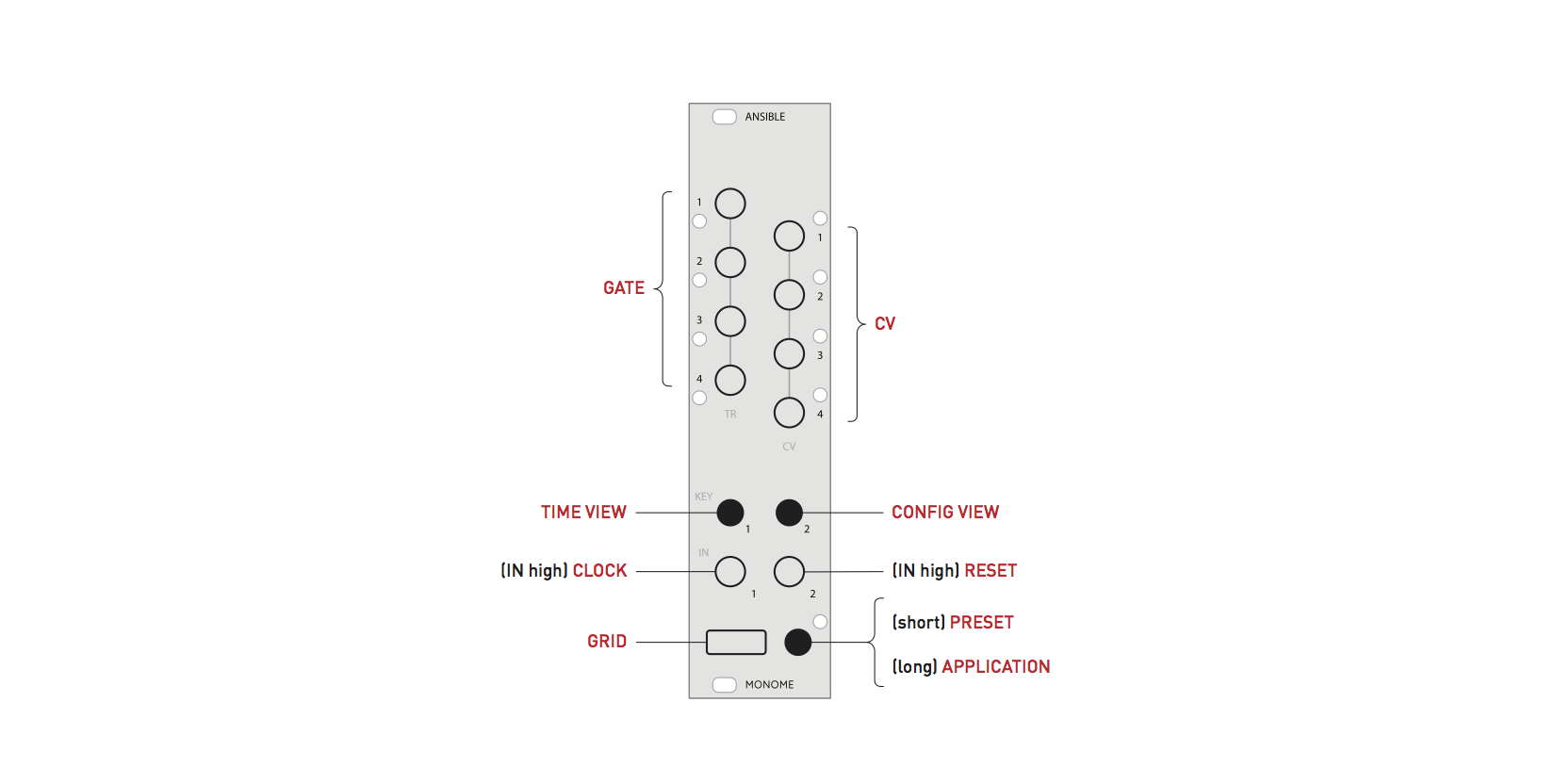
Key 1: Time View-
Key 2: Config View In 1: Clock (rising edge)In 2: Reset (rising edge)
Basic

Per row, each position counts down from right to left.
An event happens when position falls off left edge, whereupon:
- the count resets
- a note or trigger is generated (see Config further on)
- a rule is applied
Set the count by pressing a key in the respective row, from 2-16 intervals.
The count can also be a range:
- press and hold one position while pressing another position on the same row to specify a range.
- by default the count will increment per event and wrap when a range is specified (the increment rule is default).
Reset, Output, and Speeds
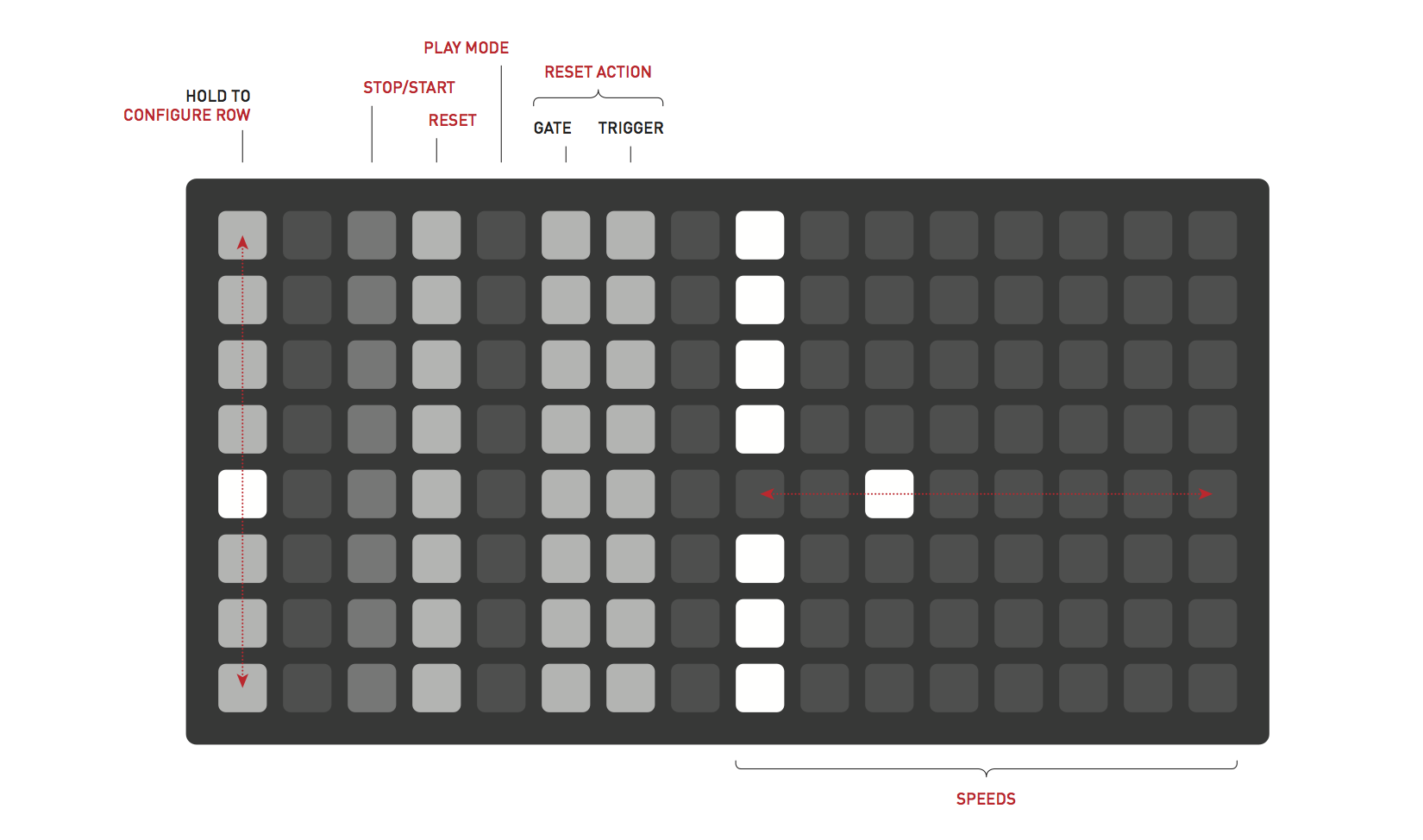
Press and hold the left column to configure that row:
col 3: STOP/START
col 4: RESET
by default, self is toggled on. toggle on other rows for this row to reset those rows. this
is a way to make one-shots; rows that only play once.
col 5: PLAY MODE
toggles on/off for all rows. send trigger when new count is chosen ("play" trigger on key press)
col 6-7: RESET ACTION
col 6: GATE. toggle state on reset.
col 7: TRIGGER. pulse output on reset. pulse length is one full clock period.
one row can gate/trigger other rows, not just itself. or no rows.
right half of grid: speeds
rightwards is slower, as clock division. this is the number of ticks to wait per countdown.
you can also specify a range of speeds, which increments by default.
Rules
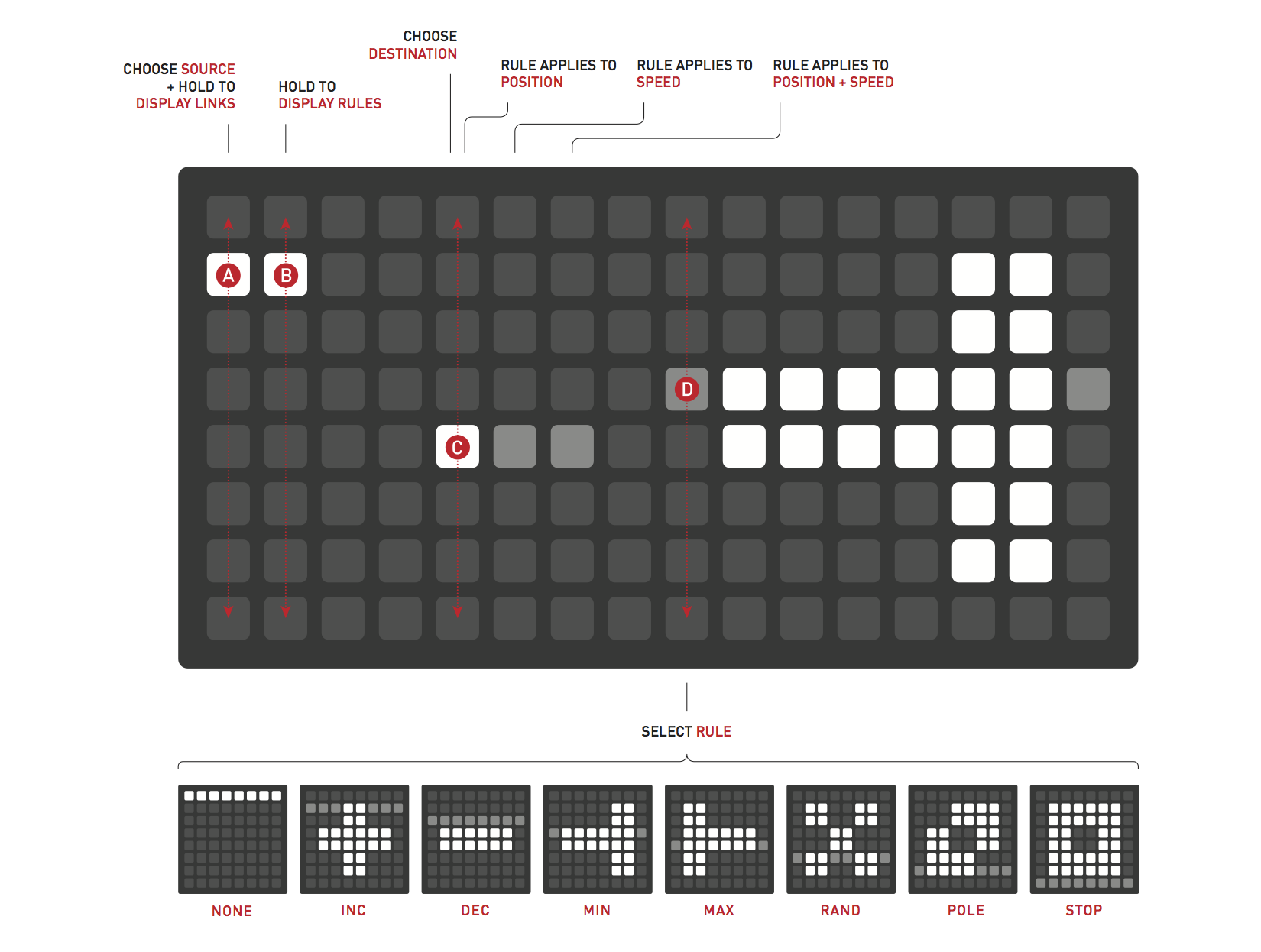
Hold the left two keys to access rules screen. Parameters are similarly per row:
col 5-7 triple: RULE SEND
choose vertical position to specify the destination row that rule will be applied to
left: rule applies to position
middle: rule applies to speed
right: rule applies to both position and speed
right half: top to bottom select
none, inc, dec, min, max, rand, pole, stop
Time
Hold Key 1 to change the timing.
With nothing present in In 1 the device is internally clocked. A pulse indicator is shown in the top row. Row 2 is rough and row 3 is fine, for jumping time intervals. The four keys in the middle are for incremental time movement, right and leftwards by fine and rough intervals.
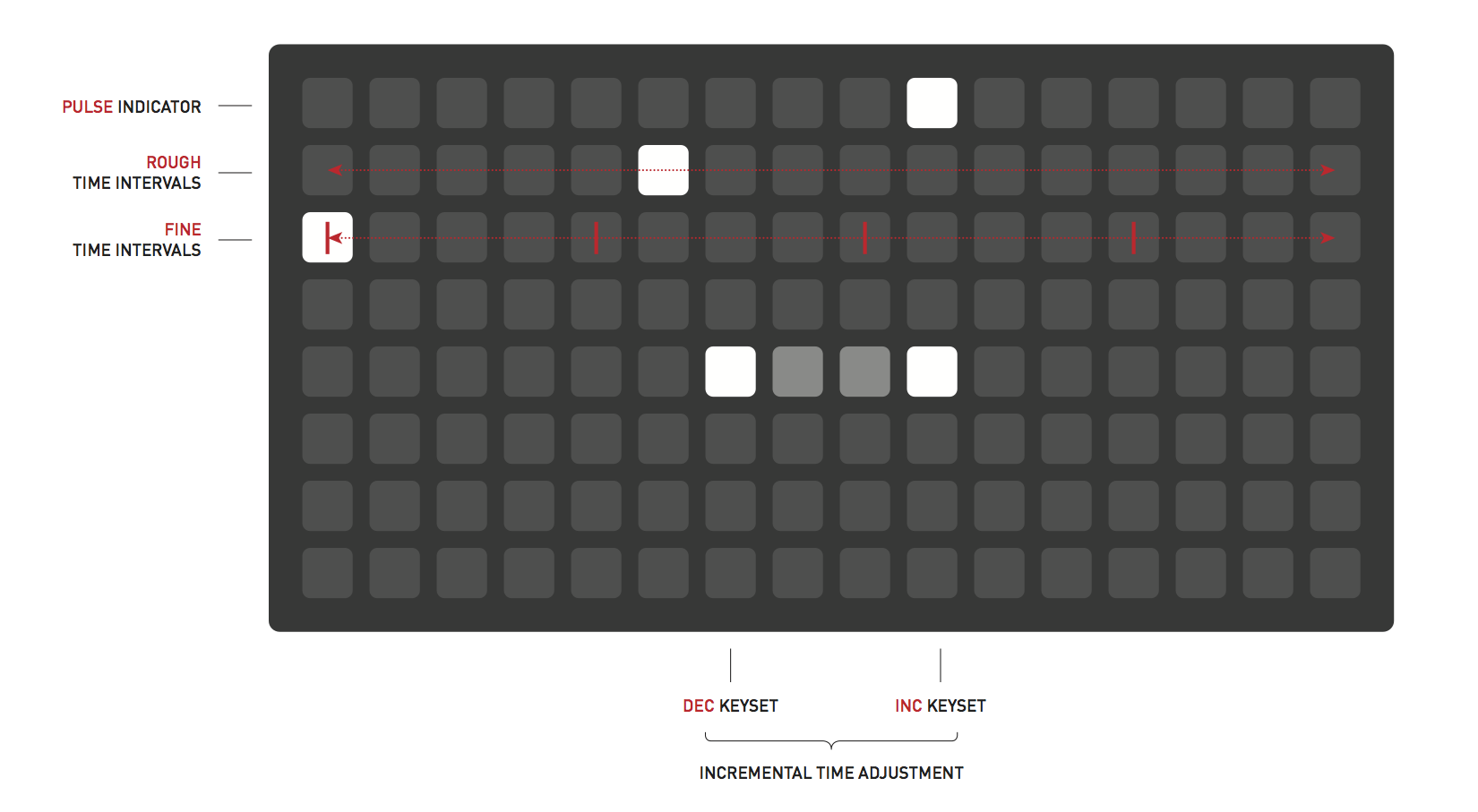
With a cable present in In 1 the device is externally clocked. The time view now shows a clock division multiplier in row 2.

Config
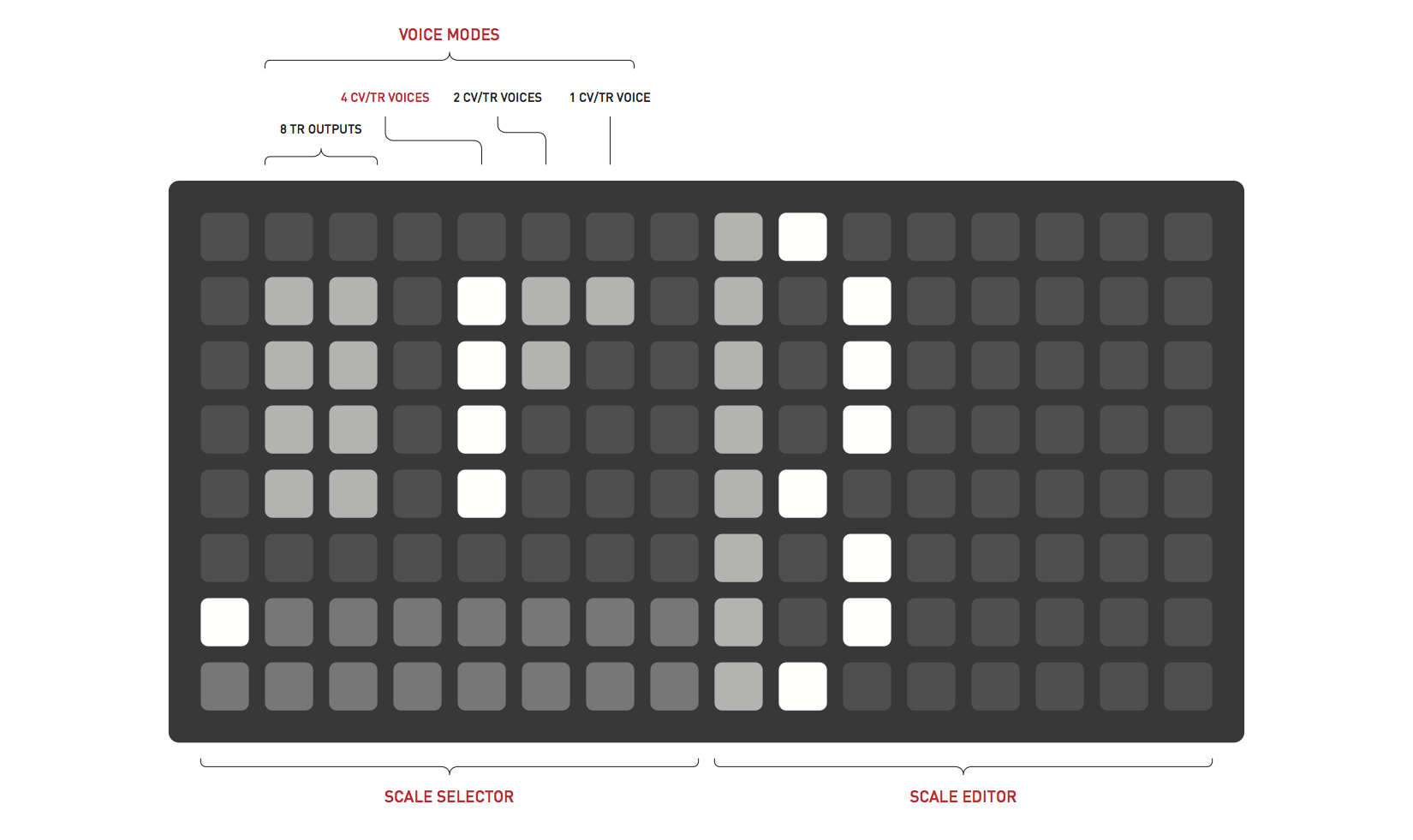
The left selection of shapes specifies the voice mode. They are (from left to right)
- 8 TR outputs
- 4 CV/TR voices
- 2 CV/TR voices
- 1 CV/TR voice
In 8 TR mode each row’s event is a pulse or gate. The other voice modes map a note to each row. When the row’s event occurs this note is sent to a CV/TR pair.
In the 1,2,4 voice modes the scale selector is also shown.
The lower portion of the left side is the scale selector. 16 scales slots are available, with preset scale modes loaded by default. The scale editor occupies the right side.
Scales are constructed from the bottom row up. The bottom row is the root note. Add overall transposition by changing this bottom row to the right, where each point corresponds to a semitone.
Moving upwards through the rows, each row specifies a number of semitones to be added to the previous scale note, building an ascending scale.
For example, a whole tone scale (2 semitones per note) would be constructed by setting all rows to the second position. (The zero position is indicated dimly. Scale notes set to zero will be identical to the previous scale step).
Scales are shared between Kria, Meadowphysics, and Earthsea, and are saved to flash whenever a preset of either is saved.
Clocking and Reset
Use In 1 to externally clock. In 2 will reset all rows back to their count.
Presets
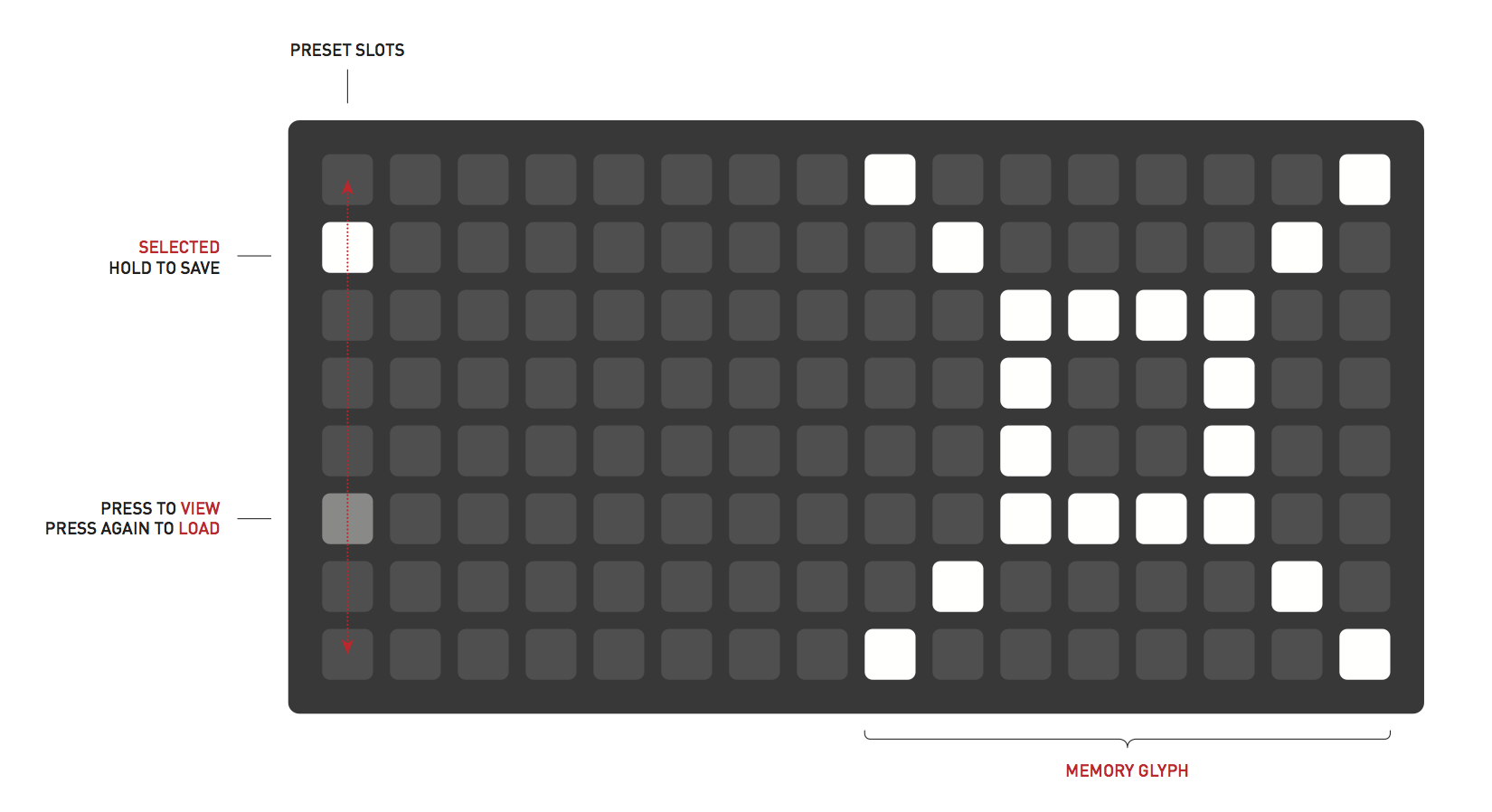
A short press of the preset key will enter preset mode.
There are 8 preset slots available, indicated in the first column of the grid. The current preset is lit.
To read a preset, press the position to select, and then press again to read.
To write a preset, press and hold the position to write to.
A “glyph” can be drawn in the right 8x8 quadrant as a visual cue as to what the preset is all about. This will be displayed when presets are selected for reading.
It is possible to backup all your presets as part of the module’s firmware; see modular firmware updates. Ansible can also save and load presets directly to a USB disk, see here.